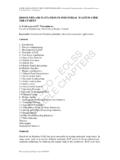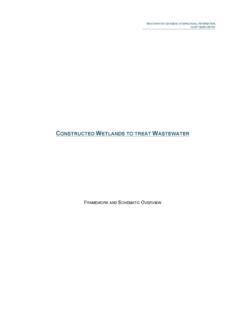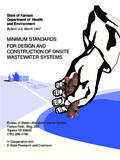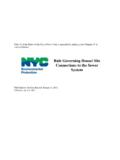Transcription of POLLUTION SOLUTION AFRICA c.c. - Outdoor Gear & Safety
1 POLLUTION SOLUTION AFRICA Brochurefor all Sewer Guard ProductsIncluding the unique, patented separatorfor hydrocarbon ( fuels & oils ) pollutants. SewerGuard equipment is designed and manufacturedin Cape Town, Rep. of South our website at DetailsIris de Witt 082 733 of legislation Catering industrySewerGuard is designed and manufactured toenable a whole range of businesses to safely andcost-effectively use municipal sewers to dispose ofwater-borne effluent. The system separates fromthe effluent all pollutants, such as oils, greases,and fats, which can cause serious degradation anddamage to the sewers. As the sewers exist for theuse of every citizen, every user of the sewers hasa civic responsibility to ensure that use of the sewersdoes not become abuse. Over the past 10 yearsnational and local government has enacted lawsand regulations to safeguard the sewers againstdamaging pollutants, thereby forcing all users ofthe sewers to respect their civic responsibility.
2 Suchregulation is similar to the strict illegality of disposalof effluent into the storm-water drains, which causespollution of rivers and ground water and degradationof communal individual has the constitutional right to call forthe testing of effluent from a suspected polluter andto have any POLLUTION positively PollutersThe businesses that are potential polluters of thesewers are generally listed as follows: - bakeries - cafes - canteens at factories and offices - conference centres - food manufacturers - golf courses - hospitals - hotels - pubs and inns - restaurants - schools and colleges - shopping centres - sports venues - service stations - take away outlets - theatresThe RegulationsThe controlling regulations are incorporated inSANS 10 400:P covering Sewage & Drainage aspart of the National Building Regulations. Theseregulations refer to other national standards asreferenced TrapsGrease traps are devices designed principally foruse by the catering industry and must conform tothe requirements of SANS 10 252-2, revised toremove inadequacies and bring it in line with thelatest legislation.
3 This standard is quite categoricalin its requirement for separation of solids to becarried out in a separate compartment from, andprior to, the separation of oils and fats. Hence, agrease trap that conforms to the regulations actuallycomprises three units, a solids catcher followed bythe grease trap itself and then a sample effluent water quality from a grease trap isgoverned, albeit vaguely which defines a minimumseparation efficiency of 92%: for many municipalitieseffluent water quality is governed by by law andfurther clarification is provided Trap Design to Conformto SANS 10 252-2 SANS 10 252-2, as referenced by National BuildingRegulations (SANS 10 400 P), defines the minimumrequirements for grease traps which must beinstalled in the drains of all catering and foodprocessing businesses to prevent POLLUTION of requirements are summarised as follows:(Para. )Pollutant Storage CapacityThe trap shall have a minimum volume of 40 litresfor storage of grease, fats, and GeometryLength: diameter ratio of 1:1,8(assuming a horizontal cylinder configuration).
4 Effluent flow rateThe trap shall be able to handle a minimum flowrate of 2l/sec.: when dishwasher effluent is treatedthe flow rate shall be assumed as 2 temperature & retention capacityThe trap shall have sufficient retention to cooleffluent to an outlet temperature below 30 C, toallow pollutants to separate and collect on thesurface of the flow rates & trap minimumretention timesFlow RateMin. Retention Time2 10 l/sec 3 20 l/sec 4 20 l/sec5 min.(Para. )Sludge Traps (Solids separators) - The standard recommends that grease trapsystems incorporate sludge traps. - A sludge trap shall function independently of thegrease trap. - A sludge trap shall be equipped with a cylindricalstrainer having a solid base and effluent outlet slotsonly in the upper half of the of Minimum Trap VolumeAs an example assume a flow rate of 5 the standard the minimum retention time shallbe 3 min.
5 , or 180 retention volume shall be 5 x 180 = 900 the minimum pollutant storage volume of40 litres the total minimum trap volume shall be940 effluent leaving the food-processing area iscleaned up by SewerGuard equipment such thatit can be safely drained, without danger of seriousblockage, to the final SewerGuard POLLUTION controlsystem, as defined in the schematic drawingIntegrated POLLUTION Control for thefood-processing Industry Food-processing industry is a general termencompassing businesses ranging from smallcatering outlets, through large restaurants, to largefood-processing range of SewerGuard equipment providesan integrated and systematic approach to controlof POLLUTION from the various activities involved infood-processing as per the diagram MaterialSewerGuard POLLUTION ControlPreparation of vegetables, Peelings, skins, off-cuts, Under-sink , soups, desserts, etc.
6 & other on grills & stoves, Grease & oils separated TellTale Drain inunder extraction canopy. in the canopy, plus any the floor to intercept spillage & floor wash water. canopy drain & floor of pots/pans and Mixture of greases, fats, TellTale Drain incrockery/cutlery in sinks & & solids. the floor underdishwashers. sinks and summary:The sludge catcher/filter removes all finer solidmaterial that passes through the floor drain grease trap retains the effluent for sufficienttime to allow the effluent to cool to at least 30 Cand separate out all grease, oils, and final effluent flows through the sample point,which provides municipal inspectors with the facilityfor checking the quality of wastewater, now led intothe SewerGuard equipment incorporates a waterseal to protect premises against ingress of sewersmells and of vermin.
7 Its design also safeguardsthe drain system against abuse by kitchen , it must be noted that effective operationof the equipment depends on regular and effectivemaintenance, particularly to remove accumulatedwaste foregoing indicates the need for a sophisticatedapproach to avoiding unnecessary POLLUTION andmeeting the requirements of reasonable approach must be incorporated in the designof new food-processing facilities such that pollutioncontrol equipment can be properly sized andinstalled such that it is accessible and the case of old kitchens careful planning isnecessary to achieve efficient, cost-effective, andmaintainable POLLUTION regulation allows for enforced closureand/or withdrawal of trading licences for businesseswhich fail to comply with its TellTale DrainThe TellTale Drain is an important component ofthe range of SewerGuard equipment, particularlyas it is in the frontline of a POLLUTION protectionsystem.
8 The floor drain provides the initial separationof pollutants from wastewater and protects fromblockage the effluent piping to the rest of the TellTale Drain is of unique design whichsucceeds in combining all the desirable attributesrequired of floor drains by food-processing facilitydesigners and operators, whereas all other productsavailable in the marketplace only achieve some ofthose & Operation of the TellTale DrainReference is made to the illustration below whichshows the 4 basic components:Item A, the drain casing with effluent outlet(Polythene), 600mm high, 250mm B, the water seal/fat baffle (Polythene).Item C, the strainer basket(ANSI 304 stainless steel).The polluted wastewater, containing solids andgreases, flows through the large holes of thestainless steel floor grating into Item C whichseparates and retains all larger solid wastewater, with its much-reduced solidsloading, overflows the basket into Item B in whichgrease/fat floats to the top and finer solids escapingfrom Item C collect at the bottom.
9 The effluent thenflows out of Item B through 4 x 50mm diam. holesnear its base into the annular space between ItemsA and B and overflows from the water seal throughthe 110mm diam. Attributes - The drain is readily cleanable by removal of thefloor grating and strainer basket. - The drain still protects the drain system withoutthe strainer basket installed. - When the water seal (Item B) is left uninstalledit is no longer possible to install the floor gratingand it is immediately obvious to both managementand any inspector that the drain is no longer ableto operate effectively. - Floor gratings are available in both round andsquare designs to suit floor design. - The design is flexible to permit under-floor sideentries and to vary the depth of the effluent outlet. - The drain can be totally stripped by a competentplumber and the downstream piping rodded to clearany blockage. - The drain has potential for providing a very smallkitchen with all the wastewater treatment necessaryto comply with the of SewerGuard Equipment for the Catering IndustryA typical grease trap, our SG03 unit having a volume of 550 Litresshown with its sludge catcher for 300 meals per daySludge catcher with strainer basket showing ease of cleanabiltyUS-01 under sink drainer, 75 / 115l capacityOil SeparatorsOil separators are used in the domain of theautomotive and petroleum industries, particularlyservice stations, car wash bays, and from the requirements of national andmunicipal regulations, businesses which intend toachieve ISO 9000/14000 certification must havewater effluent systems that comply with aninternationally recognised standard.
10 Such as EuroNorm 858 Part 1 & order to facilitate conformation with internationalstandards SABS published whichis based on Euro Norm 858 Parts 1 & 2 and replacedall other relevant standards as of 1 January 2003 Particular requirements of 1 & 2are that: - All separators shall have a minimum retentiontime of 6 min., irrespective of flow rate (This doublesthe size of separators for lower flow rates). - Separators, installed to protect sewers fromeffluent from service station fuel dispensing andoil/fuel storage areas (under canopy), shall havean automatic closure device , to protect the sewersfrom large-scale spillage. - Effluent water quality shall have a maximumlevel of pollutants of 100 ppm (100 milligrams perlitre) under laboratory new standard has eclipsed general municipaland national regulations in terms of effluent waterquality, with maximum pollutant levels of around400 ppm and a national target of 250 ppm.








